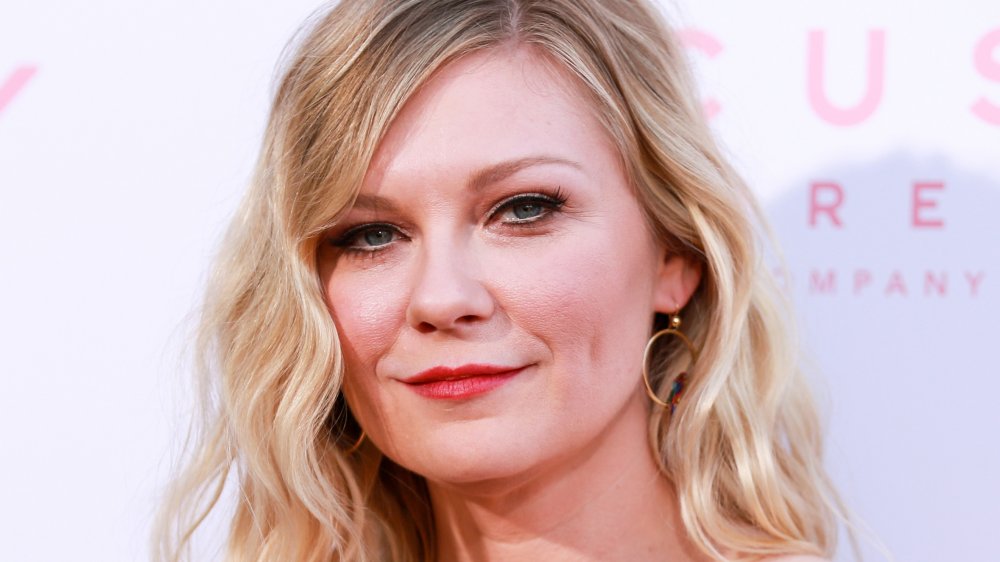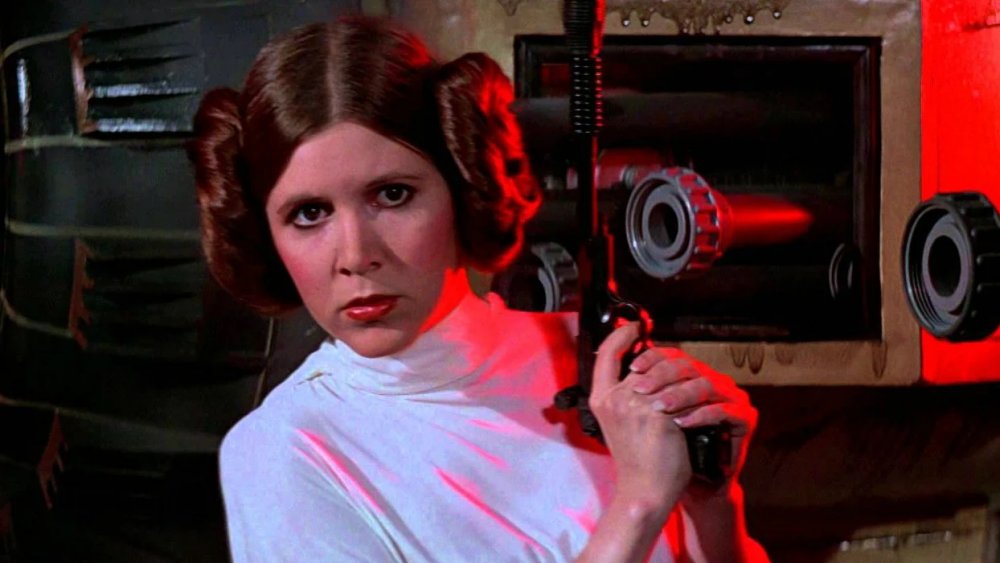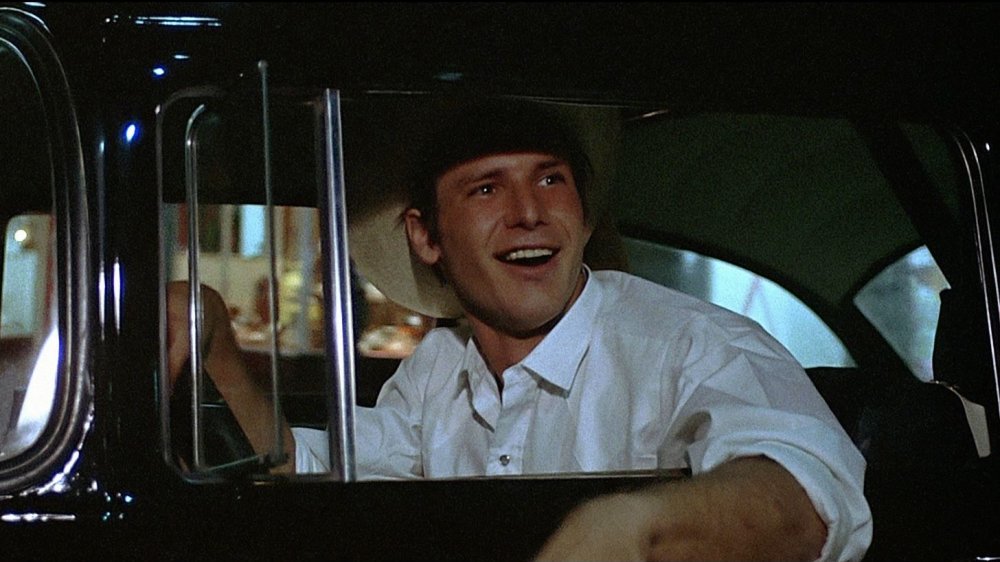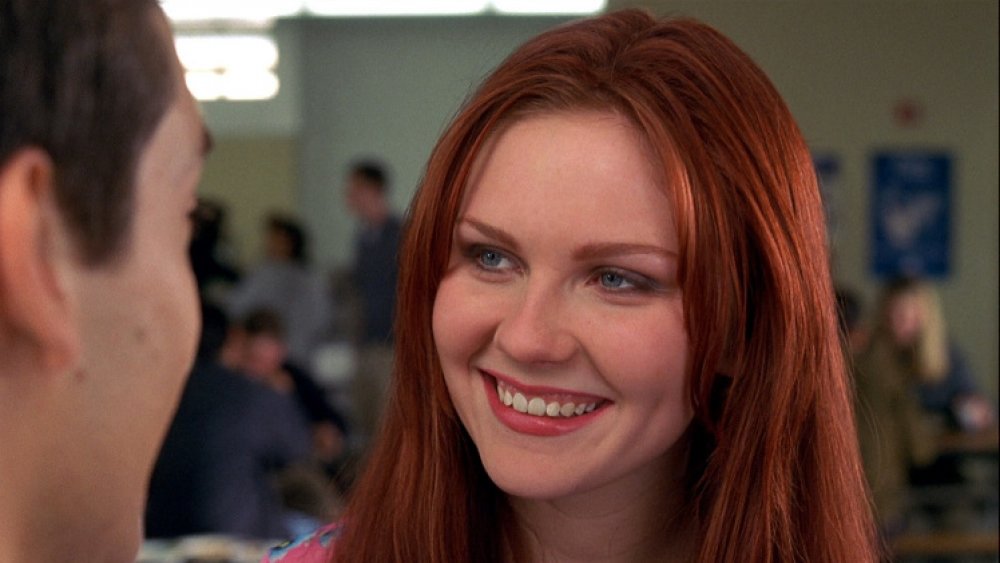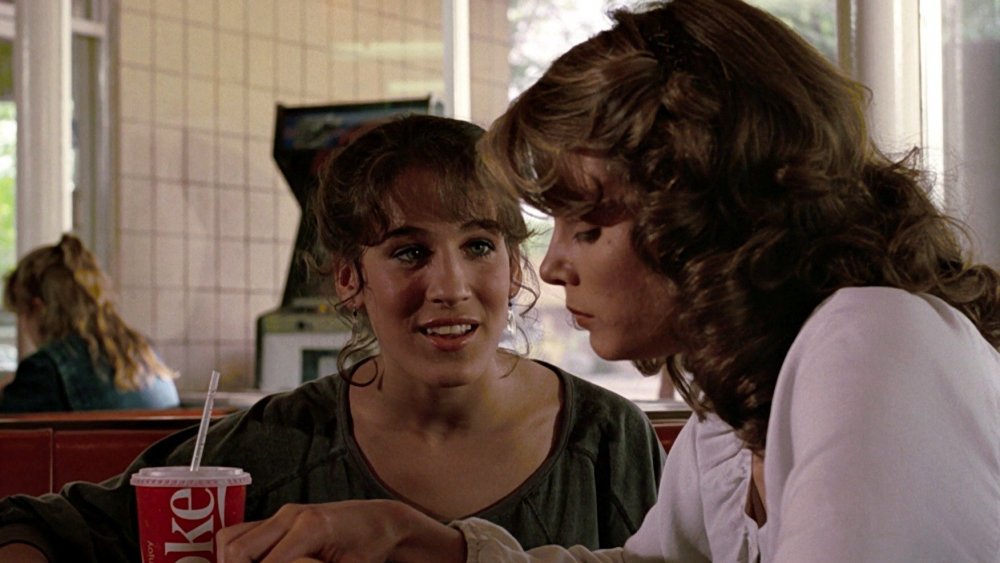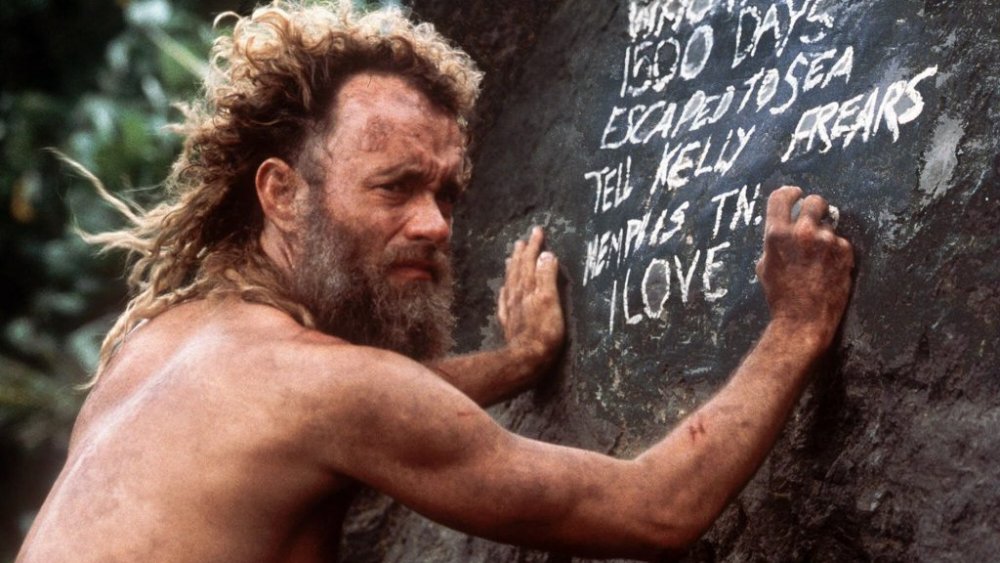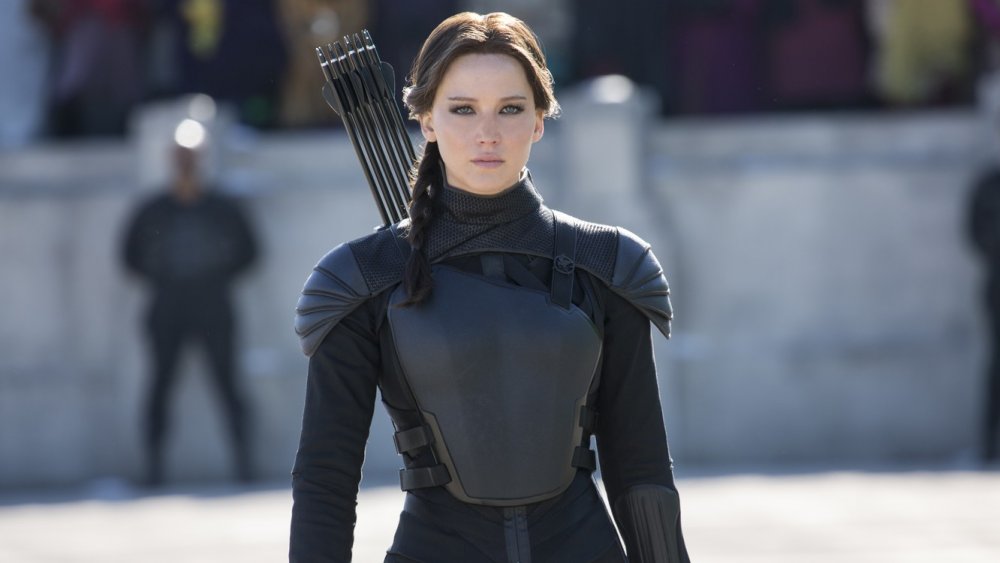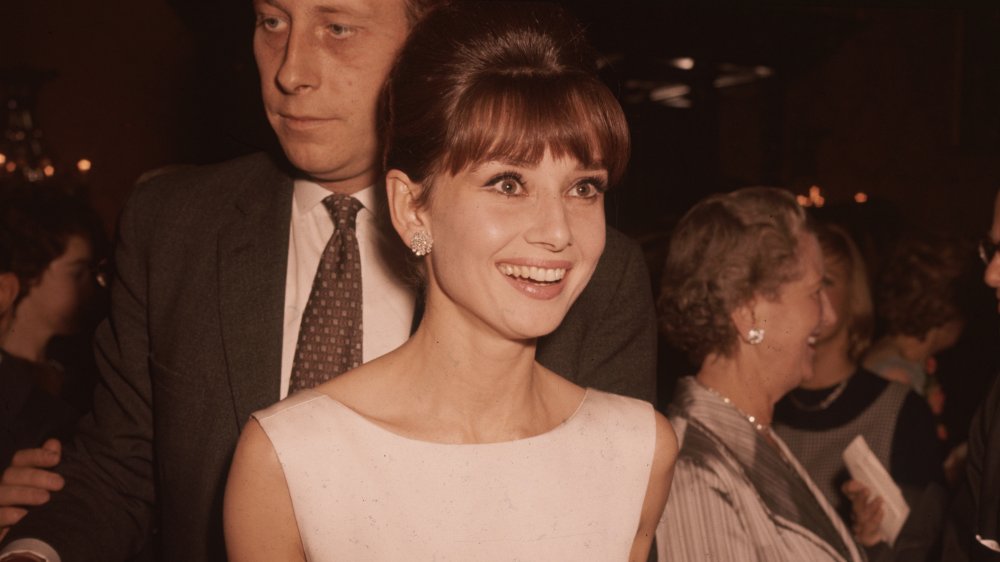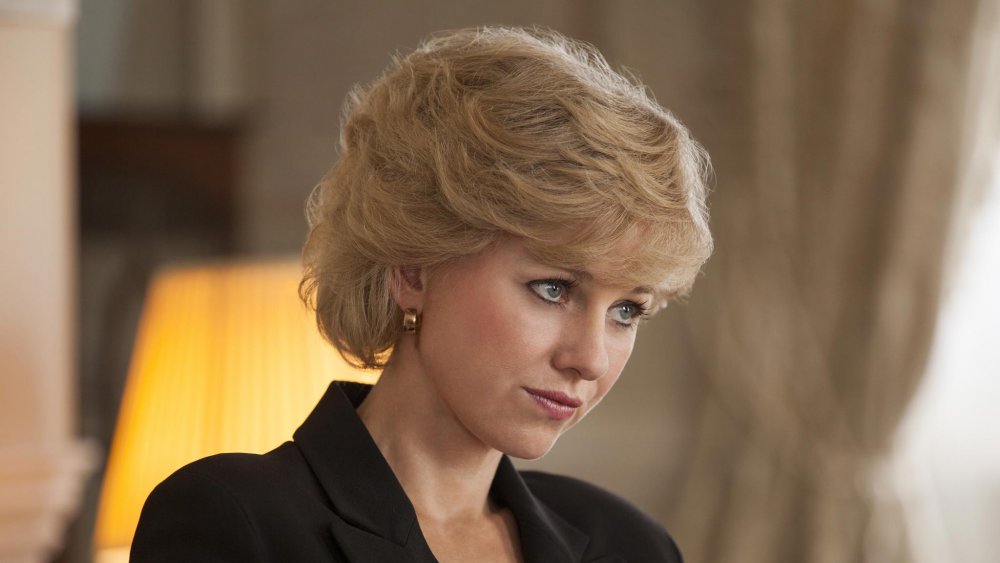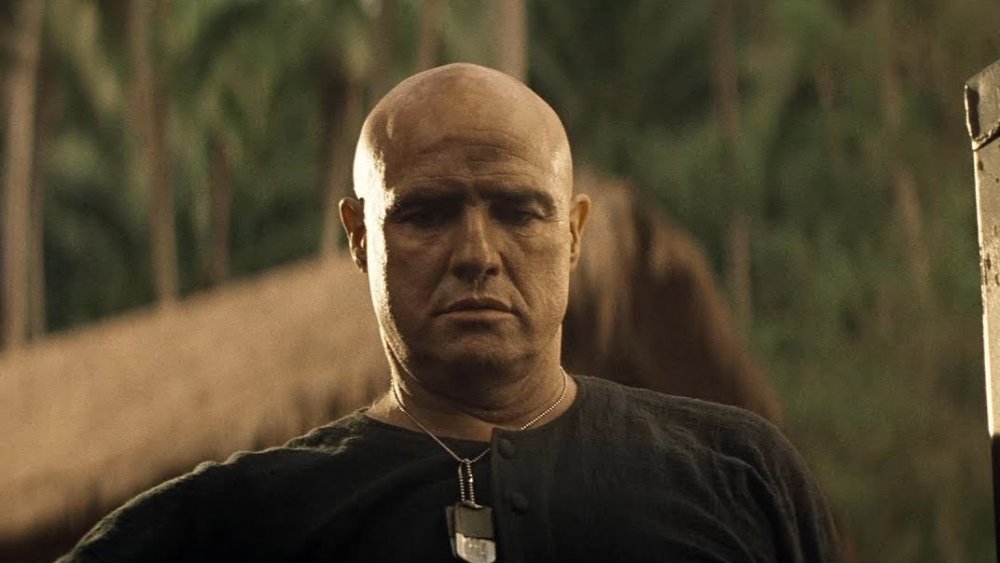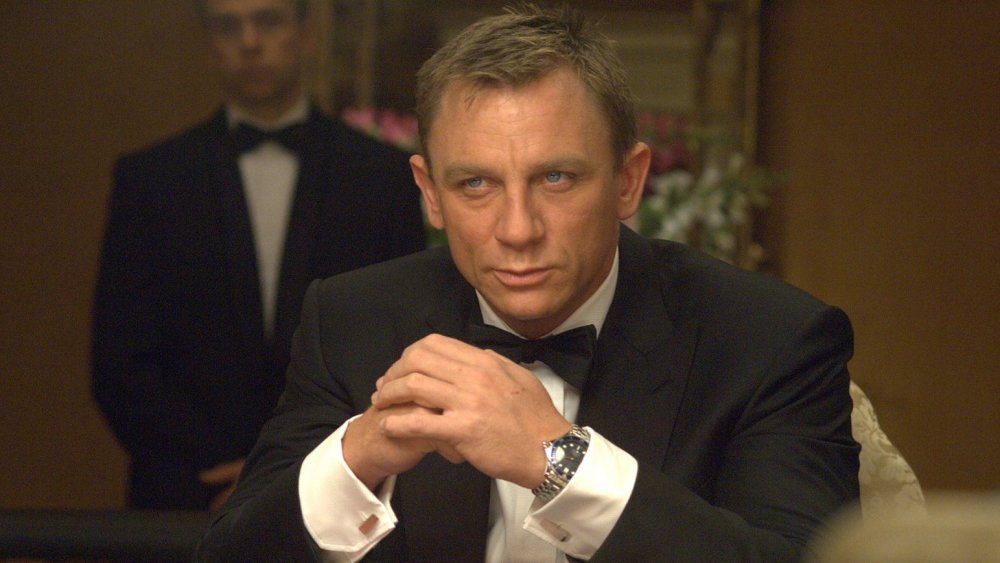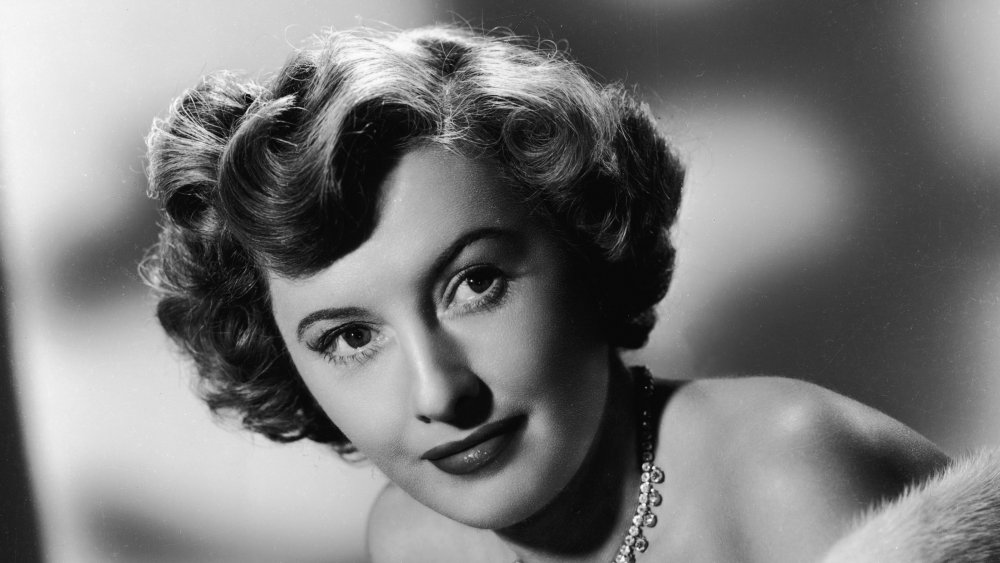Actors That Refused To Change The Way They Look For A Movie
Being an actor means being a human chameleon, willing to transform yourself to fit whatever a role requires. And if we're being totally honest, we love to watch these displays of dedication from the sidelines. That's why stories about actors altering their faces, gaining or losing muscle, shaving off their hair, or undertaking some other dramatic transformation all in the name of art and entertainment have us so enthralled.
However, the other side of the story is that actors often feel pressured to change their looks to book a part even when they don't want to. Let's not forget that when the director shouts "cut" and the scene ends, the stars are the ones who have to look in the mirror at a haircut they would never choose or deal with the health consequences of gaining so much weight in a short amount of time. In fact, some actors have flat-out refused to alter their appearance at all. From sci-fi actresses to super spy action stars, here are the actors who've refused to change the way they look for a movie — and what happened as a result.
Carrie Fisher rebelled against weight loss orders
Our favorite cinematic princess wasn't just rebelling on the big screen. Carrie Fisher was a loud, sharp and hilarious voice against the sexist expectations that actresses face when it comes to their appearances, especially around weight.
In her 2016 memoir The Princess Diarist, in which she writes about making the first Star Wars film, Fisher revealed that after landing the role of Princess Leia, she was told to lose ten pounds — despite already being very slim — and sent to what she called a "fat farm." Despite this, she turned up to set the same weight she'd been when they cast her, and she spent the first few weeks fearing she would be fired for disobeying orders. (Not only was she not fired, the movie's success meant she became forever inseparable from Leia.)
Fisher faced a similar conundrum when Star Wars was rebooted decades later, and the studio asked her to lose even more weight. They even sent a personal trainer to her house to fill it with healthy food and to whip Fisher into shape. But ever the rebel, she wasn't about to comply without a fight. In the documentary Bright Lights, which follows Fisher and her mother Debbie Reynolds, we applaud Fisher as she refuses to do lunges and sneaks cans of contraband Coca-Cola. This princess doesn't take orders.
Harrison Ford won't cut his hair for anyone
In 1973, four years before becoming famous as the creator and director of Star Wars, George Lucas made American Graffiti, a little film about a group of teenagers driving around their hometown on the last night of summer vacation. Ford has a small role as an out-of-towner who rocks up in a '55 Chevy and challenges the town's best drag-racer. Set in 1962, the film called for the actors to have period hairstyles. However, rumor has it that Ford refused to get his hair cut into a flat top for such a small role, which is why his character wears a cool but highly impractical Stetson throughout.
Ford's commitment to doing his hair his way extended back to the actual '60s, when he was dropped from a seven-year contract with Columbia because he wouldn't submit to the studio's idea of a star, which included getting an Elvis Presley-style pompadour. And before that, in college, he was ejected from the Reserve Officers' Training Corps (ROTC) for refusing to cut his long hair to army regulations, a stance that partly came from his objections to the Vietnam War.
Kirsten Dunst constantly refuses to change the way she looks
Of all the genres, the one that most often requires actors to undergo massive physical transformations are superhero movies. But it wasn't washboard abs and bulging biceps that Spider-Man actress Kirsten Dunst was pressured over. The actress said that one of the producers on the OG web-slinger movie tried to get her to change her teeth into what she called "perfect Barbie doll teeth." Dunst demurred.
This wouldn't be the last time she was asked to change her looks for a role or the last time she refused to do so. She told Variety that her frequent collaborator and friend Sofia Coppola suggested that she lose weight for their 2017 movie The Beguiled, which also starred Nicole Kidman and Elle Fanning. Dunst, again, declined, joking (but not joking) that it was harder at 35, especially since she hates working out and that the fried chicken on the film's Louisiana set was too good to turn down.
Sarah Jessica Parker said no to more red hair dye
Oftentimes, actors are required to change their hair color, and more often than not, they say yes. However, that seemingly simple request saw one famous actress initially turn down a major role. Sarah Jessica Parker told People that when she was offered the part of red-haired Rusty in Footloose, she'd just grown out the dyed hair she'd adopted to play famous redhead Annie the orphan on Broadway — which she felt hadn't suited her — and she wasn't about to do it again.
So the filmmakers hired Tracy Nelson to play the part, instead. But when that didn't work out, Parker got a call from the set, asking her to fly out to Utah the next day for the role. She told them that she could do it, but she wouldn't cut and dye her hair. With a part to fill, the odds were definitely in her favor, and the producers agreed. The movie gave Parker's career a boost, helping her transition from child roles to playing more mature characters.
Interestingly, Parker also took creative control over her most famous character's hair. While she mostly played Sex and the City's Carrie Bradshaw with long, spiraling curls, fans were shocked in season four when she cut her hair into a short bob. According to her stylist, Parker's hair had been damaged as part of another job, and she wanted a hairdo-over. Being a trendsetter means making your own rules.
Tom Hanks is refusing any more body transformations
Tom Hanks is so famous for dropping and gaining pounds to play various roles that Matthew McConaughey called him for weight loss tips when preparing to play a character with advanced AIDs in Dallas Buyers Club. Hanks' character in 1993's Philadelphia had the same condition, which often causes rapid weight loss, and Hanks lost 26 pounds to play him.
A year before, Hanks had piled on an extra 30 pounds to play unathletic baseball coach Jimmy Dugan in A League of Their Own. But his biggest transformation was for 2000's Cast Away, in which he played a man shipwrecked on a deserted island with nothing but cinema's most famous volleyball for company. Director Robert Zemeckis suggested they shoot the first half of the movie then pause production for a year, so Hanks could grow out his beard and hair and drop 50 pounds. Hanks told Entertainment Weekly that he missed French fries the most during his diet, but he refused to give up coffee.
Fast forward to today, and Hanks has put a stop to this up-and-down dieting — for himself, anyway. In 2013, he revealed that he has type 2 diabetes, which can be controlled through diet and exercise, and that the condition means he's no longer willing to put his body on the line for work or even for a vacation. However, he said he wouldn't discourage other actors from doing it if they want to.
Jennifer Lawrence refused to change her lifestyle for these action films
Ever since she tripped on the way to claiming her Best Actress Oscar in 2013, Jennifer Lawrence has been the super chill superstar. And part of being super chill is eating pizza and not worrying about working out. In fact, the year of that Oscar win, Lawrence told InStyle that she didn't go to the gym or on a diet for The Hunger Games or X-Men, even though the latter required her to be basically naked, wearing only blue body paint. She said she continued eating "ungodly amounts," including candy and hot dogs, and skipping the gym.
This is a pretty refreshing approach to the unrelenting pressure actresses face to look thin. Lawrence herself later said that she was once told to lose 15 pounds in two weeks for a role and was even compared to a lineup of naked women. In 2018, she said she wished actors would be honest about their diets, explaining, "If you are 20 pounds underweight and talk about eating pizza and fried chicken all the time, that's not going to make people feel good about themselves."
However, she may not have been totally upfront about her own workout efforts. For all that no-diet, no-gym talk, in 2014, Teen Vogue spoke to the man who trained Lawrence for The Hunger Games, who said she did a mix of sprints, spinning, archery lessons, and climbing. Plus, she wrote the foreword for the book written by her X-Men trainer.
Audrey Hepburn had a glamorous alternative to hair dye
Today, we think of Audrey Hepburn as not just a talented Oscar-winning actress but an iconic beauty whose looks many other people have since tried to imitate. But when she was starting out in the '50s, Hepburn's slender frame, dark hair and eyes, and what she called her big nose were not in style.
Despite never seeing herself as beautiful, Hepburn refused to change her looks to fit in with the emerging blonde bombshell trend. (Think Marilyn Monroe and Jayne Mansfield.) She wouldn't pad her bra with falsies to make her small chest look larger, and while she cut her hair short for her breakout role Roman Holiday, she refused to ever bleach it for a movie.
This was partly thanks to a hair disaster. After Roman Holiday, Hepburn played a water nymph in a Broadway play called Ondine, and the director wanted her to be blonde. She fought against this idea until the night before the previews opened in Boston, when she relented and bleached her hair. However, she hated it so much that she immediately dyed it back to brown. She tried a blonde wig, but she felt it looked too stiff and was too uncomfortable.
Ultimately, the makeup team achieved that mystical nymph glow by sprinkling gold dust onto Hepburn's real hair every night. Later, Hepburn did allow her hair to be lightened for Breakfast at Tiffany's, in which her famous beehive is streaked with honey-colored highlights.
Naomi Watts wasn't brave enough to try Princess Diana's hair
Despite being a famous beauty icon, Princess Diana's signature hairstyle was intimidating enough that one actress who played her refused to try it.
Naomi Watts took on the British princess and humanitarian for 2013's Diana, a movie that was supposed to garner Oscars but instead earned her a Worst Actress Razzie nomination. Whatever else the filmmakers got wrong, one part of the movie that was definitely inauthentic was her hair. Watts told Britain's Marie Claire magazine that although she likes changing her hair for roles, and that Diana's look was "emblematic" of the movie's '90s setting, she'd refused to cut her own wavy blonde locks for the part, saying, "I'm not brave enough to go that short."
To her credit, Watts did adapt other features about herself to play Diana. Not only did she study Diana's body language and take voice coaching lessons to sound more like her, she wore a prosthetic nose to make her face look as similar to her subject's as possible. Unfortunately, it wasn't enough to save the film, which Watts herself later admitted "ended up taking a direction that was not the one I was hoping for." So she also nailed the diplomacy.
Marlon Brando wasn't in military shape for this war movie
When Francis Ford Coppola's Vietnam War epic Apocalypse Now started shooting in 1976, Marlon Brando was already an eccentric legend and a legendary eccentric. Thanks to his electric performances, he'd first made a name for himself onstage before moving to the big screen and winning two Best Actor Oscars. He'd also earned a reputation for being reclusive, difficult to work with, and unpredictable.
The production of Apocalypse Now was infamously chaotic from the start. The planned 14-week shoot in the jungles of the Philippines was immediately thrown off course. There were multiple cast changes, tropical diseases, and the script wasn't finished. Plus, a typhoon closed production down for three months, lead actor Martin Sheen had a heart attack from the stress, Coppola had a nervous breakdown, and the crew were living a non-stop, drug-fueled party in the hotel.
Into all this chaos, Brando arrived. Treating the movie like nothing more than a payday, he hadn't even bothered to learn his lines, and he refused to act opposite co-star Dennis Hopper. Also, at 300 pounds, he didn't look the part of the half-starved, regimented army colonel that Coppola had hired him to play. It was too late to do anything about Brando's looks — especially after he spontaneously shaved his head one day — so they ditched the idea of the military uniform, dressed him in black, and shot him mostly in shadows, improvising lines.
Daniel Craig has no time to dye
His most famous character has a license to kill, but Daniel Craig refuses to live and let dye. When Craig was cast as James Bond, the spy who never ages, for 2006's Casino Royale, studio bigwigs asked him to dye his blonde hair brown to fit in with the looks of the other five actors who've played 007. But Craig refused to hit the (dye) bottle, instead compromising by cutting his hair short for a hardened, military-influenced look.
Over a decade later, Craig is still playing Bond, and he's still going with the au naturel look. And since the character has been through some stuff in the years since Casino Royale, it makes sense that he would be looking a little rougher around the edges and the hairline. But Craig doesn't always say no to drastic hair-dying, however. For Steven Soderbergh's 2017 NASCAR heist movie, Logan Lucky, he was barely recognizable with a bleached blonde buzz cut. According to the director, it was Craig's idea. Maybe he just likes being in the driving seat when it comes to his hair.
Barbara Stanwyck went grey in black and white
Back in the golden age of Hollywood, Barbara Stanwyck was earning a reputation as an emotional powerhouse and consummate professional. Born in 1907, she appeared in her first film in 1927, and the first 20 years of her career were spent in films shot in black and white.
This was helpful because Stanwyck started going grey in the 1940s, when she was in her 30s, and grey hair looked blonde in black and white. Against the protests of many makeup artists and directors, and even though many actresses struggled to find work when they naturally aged out of playing young characters, she refused to dye her hair. In fact, she was pretty proud of growing older. She happily played characters her own age and sometimes older, and she was open about the year she was born — all practices many actresses at the time refused to do.
It helped that, unlike many actors of her era, Stanwyck wasn't signed to a contract with a studio, which gave her more control over her image. She continued working up until 1984, even appearing in an episode of Charlie's Angels that was intended to kickstart a spin-off series called Toni's Boys.
